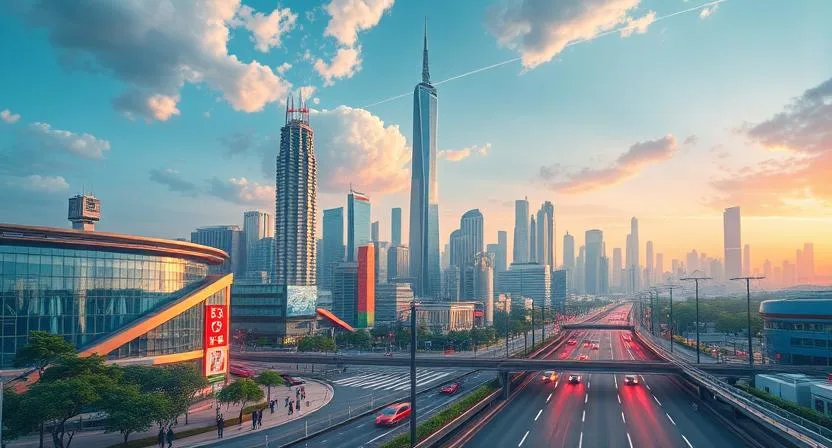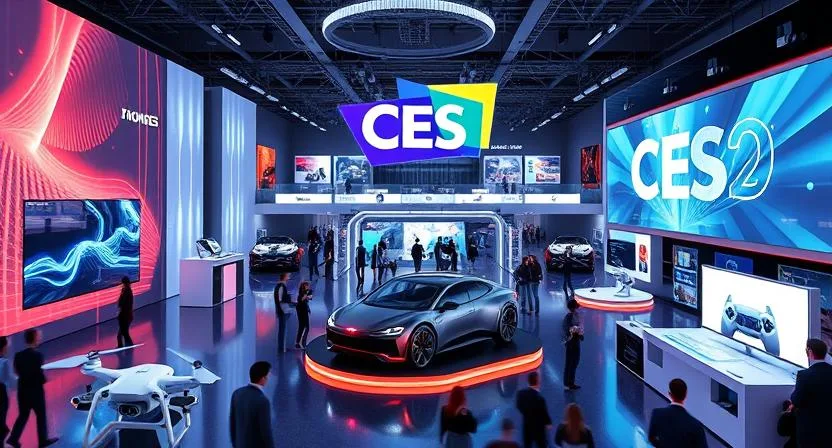The idea of “smart cities” has evolved as a lighthouse of modern development as our planet gets more linked. Driven by a complex network of technologies, these metropolitan settings are changing our way. The way of life, business, and interaction with our surroundings. Leveraging the Internet of Things (IoT), big data, artificial intelligence (AI), and more, smart cities offer a period of hitherto unheard-of urban efficiency, sustainability, and quality of life.
Municipal administrations and business organizations, among other decision-makers in this sector, must negotiate a multifarious terrain of stakeholders and legal obstacles to commercialize. A range of solution providers are carving out their niches in this complex ecosystem. Offering innovative goods and services that enable smart city technology to assist in altering metropolitan areas.
In five main respects, smart cities are transforming urban living; they will be discussed in the next sections.
1. Enhanced urban mobility and transportation systems

Intelligent transportation technologies in smart cities are revolutionizing urban travel. Cities are using technology to improve mobility, from linked cars that simplify public transit to dynamic traffic control that helps to ease congestion. Los Angeles County, for example, installed the KITS Advanced Traffic Management System, which lets governmental agencies track the real-time operation of more than 250 crossings and get instant notice of any failures.
Furthermore, promising to change urban transportation are autonomous cars. Originally created in cooperation with the city of Boston, INRIX’s Road Rules help governments to digitize transportation infrastructure, therefore aiding the integration of autonomous cars into urban traffic networks.
Still, the viability and return on investment (ROI) of these technologies depend on general acceptance and resource availability. For instance, Inrix’s IQ is enabling smaller communities like Birmingham, Alabama, access to transportation data in ways akin to those of big cities like New York. Although the ROI has not been as clear-cut and the development has been slower than anticipated, with more general acceptance the possible advantages might be really large.
2. Environmental sustainability and energy economy of infrastructure

The energy efficiency and sustainable infrastructure smart cities demand form the pillar of their conception. Key here is integrating renewable energy sources, using smart grids, and putting innovative energy management technologies into use. Although decreased carbon emissions and significant cost savings are the objectives, the actual results have so far been different even if the energy usage should be drastically reduced.
If these projects overcome obstacles and are widely adopted, they might show major return on investment for investors and decision-makers as well as help to create a better surroundings. Though the ROI has not been as significant as first projected and the development in implementing these sustainable infrastructure projects in smart cities has been slower than predicted. Cities have the potential to draw environmentally concerned firms and citizens by lowering energy costs and supporting sustainability, thereby promoting long-term economic development; yet, this depends on the effective integration and scalability of the technology.
3. Public services and wise government of Smart Cities

In smart cities, digital revolution is altering public services and government. Transparency, efficiency, and accessibility are being raised by means of e-governance systems, citizen involvement platforms, and digital service delivery. For a variety of problems, including pothole repairs, heating apartment buildings, and refunding unpaid parking penalties, New York City’s NYC311 service, for example, welcomes service requests. Another great example of where e-governance is a basic building element turning the city-state into an intelligent island is Singapore. Among the government’s projects include teaching Singaporeans internet skills, constructing national broadband networks, and establishing a site specifically for accessing a spectrum of e-government services.
These technical developments could raise public institution confidence and citizen satisfaction. Widespread adoption, constant improvement, and efficient scalability are what define the successful application of and the ROI in these technologies. Indeed, when these elements are satisfied, communities may obtain lower expenses and higher income while raising the standard of public services.
4. Urban planning and intelligent infrastructure of Smart Cities

Urban planning and infrastructure construction are undergoing a sea shift as IoT sensors and data analytics are being included. Leading the way are smart buildings using these technologies, best using resources for sustainability and energy economy. Furthermore enabling rapid interventions and predictive maintenance is real-time data monitoring across the urban environment including of utilities and transportation systems. This guarantees not just sustainability but also maximum efficiency of urban infrastructure, hence producing more livable and responsive cities.
From better resident quality of life to cost savings and superior resource management, cities offer several advantages. The ROI is amazing for investors and decision-makers as improved infrastructure results in savings and attracts tech-savvy companies and citizens.
5. Better citizen well-being and quality of life in Smart Cities

Smart cities are improving the quality of life of its citizens by include environmental monitoring, public safety projects, and smart healthcare systems. One instance is the installation of sensors to track environmental factors including air quality. Through smartphone applications, these sensors may give homeowners real-time air quality data as well as assist to pinpoint main air pollution sources. For instance, Beijing identified pollution sources and closely monitored traffic and construction to cut air pollutants by 20% within a year.
If the technology is widely used, these and like actions might show a significant return on investment for decision-makers and investors. They also have the potential to result in safer, better living surroundings. Enhanced public health and safety may help communities save money; a good quality of living can draw qualified people and creative companies, therefore promoting economic development. Nonetheless, one should approach this with some care since, should the technology be embraced widely and properly incorporated into the infrastructure of the city, the ROI will be considerable.
A route towards better and more environmentally friendly urban life.
Urban living is being greatly changed by the present reality of cities turning into smarter and more sustainable surroundings. A sustainable urban future is being led by improved transportation, energy-efficient infrastructure, smart government, intelligent urban planning, and focused citizen well-being.
The intricacy of this changing scene calls for strategic partners like L.E.K. Consulting. Our sector knowledge and ability to reach important decision-makers will help the smart city sector flourish. Under our direction, stakeholders may negotiate the complexities of smart city projects and maximize their approaches for impact and resilience.
As we consider this urban revolution, the issue becomes not so much whether to start this path but rather how best to do it. Working with us provides insightful analysis and helping hand along this transforming journey. See L.E.K.’s Technology practice for further direction in the smart cities space and join in shaping the cities of future.
Hot Topics now-a-days:







